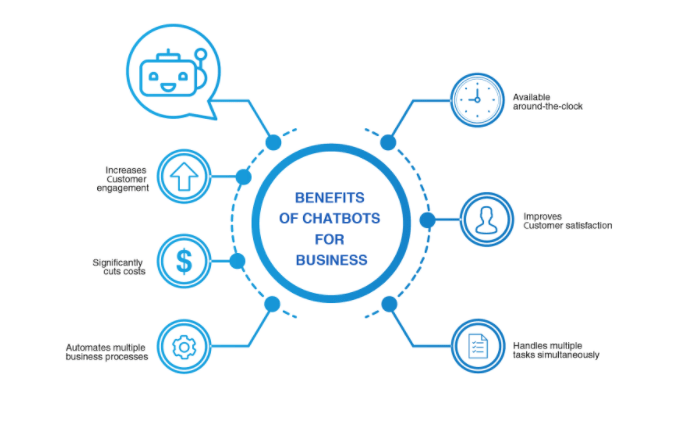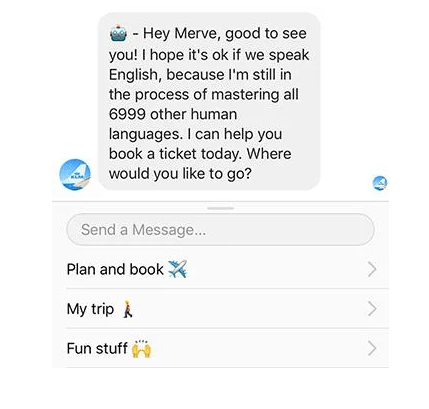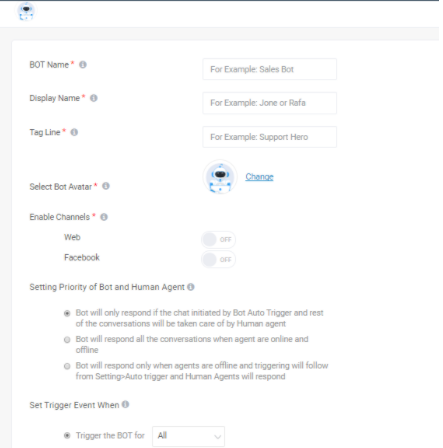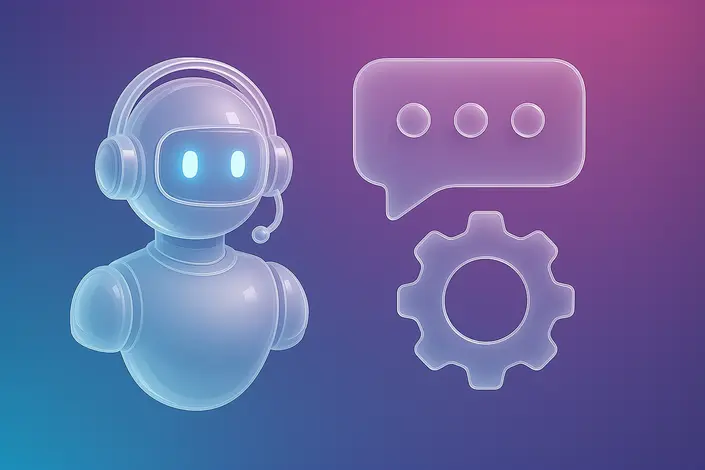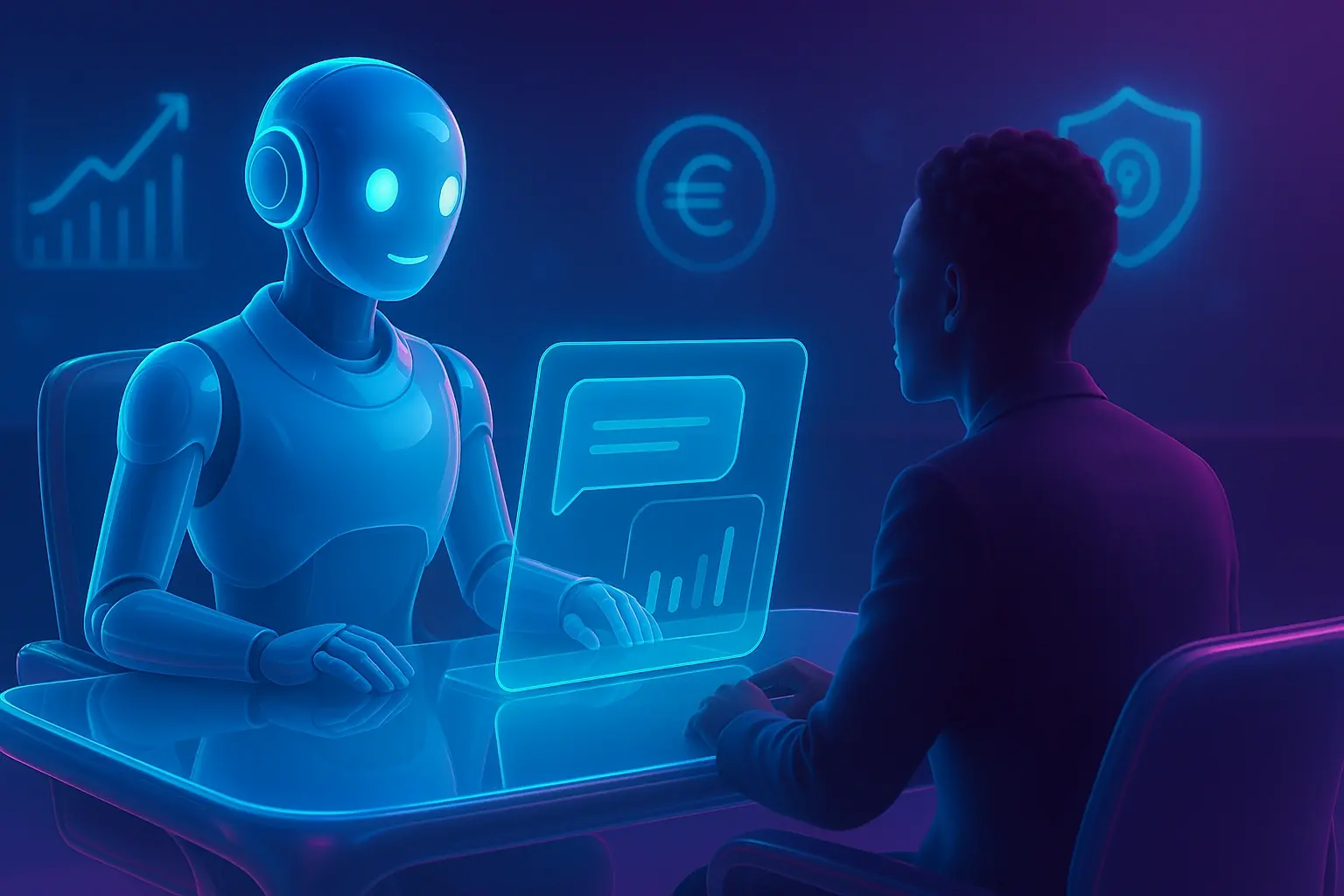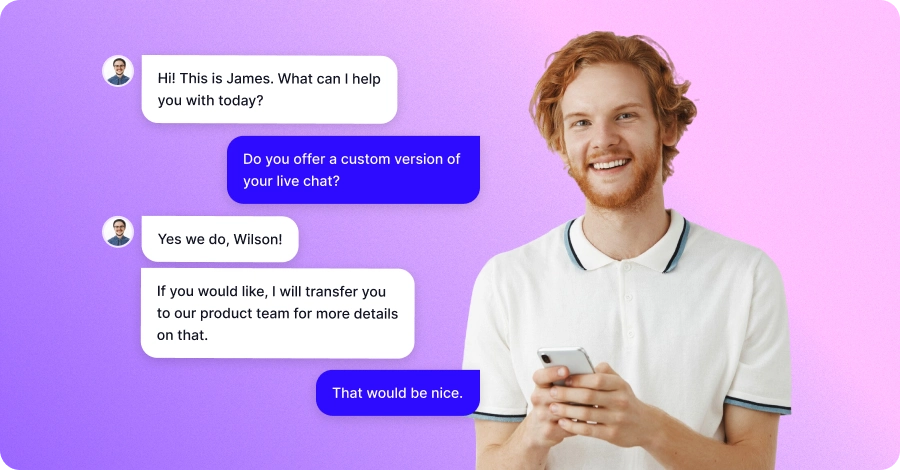10 Steps to Create Conversational Chatbot Design
- March 11, 2021
- 13 mins read
- Listen
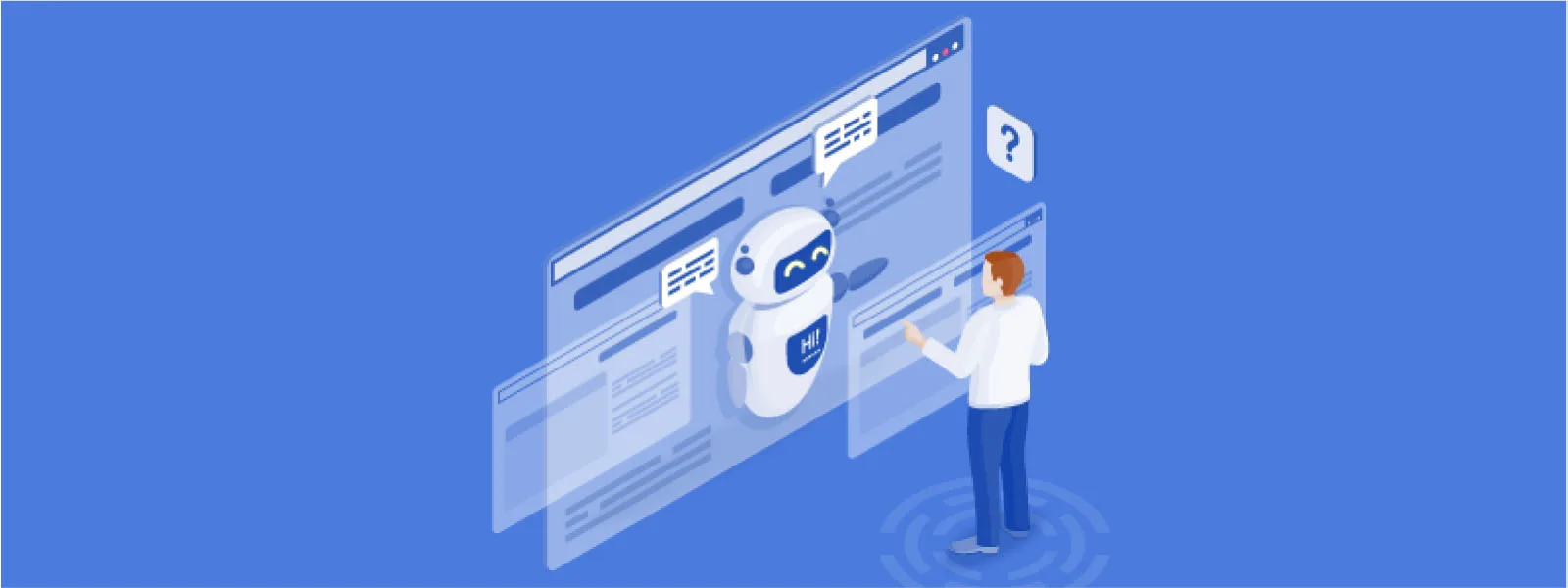
Effective communication and a great conversational experience are at the forefront when it comes to chatbot design. Chatbots are the technological bridges between businesses and consumers to provide faster and improved online experiences.
According to the research conducted by Grand view global chatbot market size will be $1.25 billion by 2025. With an enhanced focus on customer engagement, chatbots in the form of a conversational interface (UI/UX) will be adopted by a huge number of businesses.
Why conversational UI/UX is important for chatbot design?
While building the chatbot user interface (UI), always remember who your end-user is. They are your customers and the fact that can’t be denied is – customers are judgmental. They have different motivations and look for emotional bonding everywhere, hence creating a first unforgettable impression becomes crucial.
This is how chatbot design gains importance and you should not ignore the key aspect – make it as human as possible. You have to be customer-centric while building your chatbot UX design. So, that the impressive UI/UX positively impacts your business and customer relationships.
A good chatbot design has a deeper impact on different business functions such as:
- Consistent customer experience – Well-designed chatbots can help you to anticipate customer needs and respond quickly in a personalized way that increases satisfaction. Hence a better customer experience can help to establish a better brand.
- Increased customer engagement – Businesses realize how important it is to keep their customers engaged. Intelligently designed chatbots to engage the customers by understanding their intent and providing relevant answers.
- Higher lead generation – When your bots are able to provide guidance and tips during customer interaction for successful conversion increases your lead generation.
How to design a successful chatbot: Tips & Best Practices
Though bots are powerful customer engagement channels, many users say that chatbots fail to resolve their issues and they rather speak to a human than a bot to answer questions.
Fair enough, but maybe this perception can be improved.
We are sharing tips & tricks on how you can design a chatbot that meets the expectations of your company and customers.
1. Know your customers
Connecting with your customers is the most important thing for any business.
And the first question to ask yourself is “Who is your ideal prospect?” Who are the customers you’re trying to reach and market your products?
Understanding customer personas, also known as ‘buyer personas‘ or ‘buyer personalities‘, is very crucial and the first step in building a chatbot. Knowing the overall personality of your customers, where they live, their age, their interests, likes/dislikes, makes the process easier and relevant. When you know all this information, it helps to define your target audience.
Knowing your target customers can help you in designing your chatbot by:
- Understanding the customer personas and customer intent will help you to define your bot flow better.
- It allows you to add contextual relevance to the chatbot responses to match customer needs.
- Customer personas can be enormously helpful when you are trying to personalize an offer or a marketing campaign to appeal the right audiences.
2. Identify the core objectives
A very important question arises here – Why do you need a bot?
One of the crucial aspects of chatbot design is the end goal of building the bot. The actual purpose is what you will have to design your chatbot around. You have to be sure of your purpose for creating a bot because:
- This will allow you to create a design-specific experience.
- It will provide you will the right parameters for its analysis.
KLM Airlines created a Facebook Messenger chatbot to help users book tickets initially. Over time, they expanded the bot’s purpose “to guide customers through everything they need to bring to the destination.”
The KLM bot now helps users with all their travel needs, including arranging for visas and sending reminders.
If you go deeper to understand, the objectives can be classified into two things:
- Define goals – In order to have a successful chatbot, your customers need to know what your bot can do. By giving customers clear instructions on how to interact with your bot you will keep customers on the right track.
- Outline the end result – When you design your chatbot by identifying the purpose, it is able to match with the customer’s intent. It is vital to be customer-centered while designing the bot flow to add great value.
3. Choose the right type of chatbots
Every business has a unique set of requirements. It is very important to identify the type of chatbots to be used to engage customers effectively. For that, you have to understand how a chatbot works.
There are two main types of chatbots: rule-based chatbots and AI chatbots.
Rule based chatbots – They are also known as command-based or scripted bots. These bots rely on predefined paths, scripts, and dialogues during conversations. At each step during the conversation, the user will need to pick from explicit options that determine the next step in the conversation.
Conversational AI chatbots – These are commonly known as virtual or digital assistants. AI bots use NLP technology to determine the chatbot intents in singular interactions. With conversational communication skills, these bots converse with humans to deliver what customers are looking for.
Best practices:
- You can use rule-based chatbots as it follows predetermined rules and is easy to use for simpler scenarios of answering common queries such as business hour inquiry delivery status or tracking details.
- AI bots understand the context by applying predictive intelligence and sentiment analysis to learn user behavior and provide more personalized conversations.
- It is recommended to rule-based bots because they create a more fluid chat experience. It is better to provide your users with options while they are chatting with the bot. It saves time and allows for seamless conversations.
4. Define your bot personality
Have you ever thought about how can you personalize the conversations between the bot and users to be more life-like, personal, and representative of human interaction?
By giving your bot a distinct personality.
Building a rich personality makes your chatbot more believable, and relevant to your users. Investing in personality informs every touchpoint of a chatbot. Personality creates a deeper understanding of the bot’s end objective, and how it will communicate through a choice of language, tone, and style.
- Branding – You can distill your brand voice into the bot persona to create a myriad of personalized opportunities to engage customers through personalization at scale. You can enhance your bot personality by giving a unique name. It will make your customers feel like talking to a human agent, not to a robot.
- Messaging – You can set a warm welcome message to greet users and actively help them with what they are looking for. The entire conversational flow with visitors depends on this initial greeting message. It also spreads awareness and guides visitors about the product and services you deal with.
5. Design your bot flow
One of the biggest challenges in chatbot UX design is identifying all the tasks and how the chatbot will guide the users in all those scenarios. During the conversation, your chatbot features should be capable of engaging visitors with quick answers and solutions.
You can convert the scenarios into small steps known as a node with the help of different actions to build the bot flow. The actions could be:
- Setting a welcome greeting
- Collecting visitor information
- Providing different options to the user request
Each node is for specific actions and the small actions are interconnected with the other. You can make your chatbot flow as conversational as possible to enhance your customer experience.
How can you make your chatbot flow better or as conversational as possible?
- Make it interactive – Adding visuals in the form of videos, emojis, gifs are great elements for bot design. Interactive visuals process 60,000 times faster and bag your user’s interest.
- Reduce friction – Ensure that your bot design is conversational. Conversational bots have open interactions, allowing you to understand your customer’s needs better and collect more valuable data.
- Give your customers a way to talk to a human – Back your bot design with human support. In case the user wants to connect with the support agent, there should be an easy way.
6. Chatbot + Live chat = Powerful Duo
Live chat and chatbot are two great communication channels for real time engagement with customers. By understanding the pros and cons of chatbots and live chat will provide better insights on which is the ideal fit for your business.
It is recommended that businesses should combine both channels to deliver a higher level of customer experience.
The business functions can be balanced by using both platforms to deliver automated conversational support to customers. Businesses whose priority is instant response and 24×7 availability can use chatbots as the first point of interaction to answer FAQs.
The conversations that are complex and need additional support can be directed to the live chat agents.
Best practices
- You can provide your customers with the hybrid support of both live chat and chatbot. Bots can’t answer simple queries and complex queries can be answered by human agents. This will help you to deliver your customers the best of both worlds.
- Provide your users with an easy way to connect with your support team. This will increase user engagement and boost customer satisfaction
7. Measure your chatbot metrics
One of the crucial steps after you designing the chatbot is to know-how is the bot’s performance? Are your customers happy with the chatbot experience or not? In order to know the answers, you need to measure them.
Measuring the chatbot KPIs helps to understand the overall user experience with the chatbot was good or not.
While evaluating your chatbot experiences you, need to check on the below areas:
- Determine if your chatbot is meeting the core purpose of designing a chatbot.
- Focus on optimizing your chatbot based on your goals
- Outline the best ways in which you can drive your audience to your desired outcome
Here are the key chatbots metrics to be measured:
- Total human handover – It refers to the total conversations that are transferred by the bot to the human agents. It shows how capable the bot was to engage the customers by answering their queries.
- Completed bot conversations – It refers to the conversations that are entirely handled by the bot ending up with a successful conversion. There is no human interference at all.
- Customer satisfaction – With CSAT or NPS survey, you can calculate the score and know how satisfied are your customers with your bot responses.
8. Focus on fallback scenarios
Defining the fallback scenarios is an important part of designing chatbots. When users interact with your bot with a random request they expect a response. If your bot is not capable of fulfilling the user requests, it is not an ideal fit for those scenarios.
When a user interacts with the bot and the bot fails to understand the scenario, it can possibly respond in the following ways:
- Human handover – If the bot is unable to identify the intent of the user request, without delaying it should be transferred to the human agent.
- Fill up form – The chatbot can offer a form where the user needs to provide few details to be connected again.
- Leave a message – The bot can ask the user to leave a message. The user will be acknowledged with the right solution.
When the fallback scenarios are well defined, there are fewer chances that users might leave confused. Rather it helps to end conversations on a positive note.
9. Add a pinch of humor
When we buy a product, we don’t just use the product but experience it. Every time we interact with a particular product, we put emotions into that experience. No matter if it is positive or negative, we always have feedback about the experience.
But what actually makes a product or service unforgettable?
An attractive product or service. Humor tends to have a positive effect on how humans perceive conversations.
- It helps brands to sell. It also makes the experience of using your product memorable.
- It engages the user, especially in interactions or processes that may be long or arduous.
Pro tip – Adding visuals cleverly can be a great way to impress your visitors.
10. Select the right platform
Choosing the right platform for designing your chatbot is very important. It purely depends on your business requirements. You can choose one of the two ways to build chatbots. They are:
Ready to use a chatbot platform
The ready to use bot platforms are kind of a blessing for businesses as it saves effort and time. Here are the criteria to select a bot platform.
- Easy to use – A ready-to-use bot platform comprises predefined chatbot templates and it makes it easy to build the bot as per your needs and deploy it across multiple channels.
- No coding – With zero coding, you can create a chatbot with less effort & time and for better customer engagement.
- Human handover– Having a bot platform that provides the capabilities of live chat and chatbot helps to handle customer conversations effectively. Bots handle the simpler queries and the complex ones can be transferred for human support.
- Comprehensive analytics – Bot analytics help to measure your customer satisfaction, what are the successful and failed searches your bot answers. By measuring these metrics, you can identify the key queries your customers are asking and train your bot accordingly.
- Security – Bots collect a lot of information from customers. They also have all the conversational data consisting of sensitive details. Businesses need to implement measures to safeguard customer data in order to earn and maintain our trust.
Custom development
It is recommended to build a customized bot development only if your business requirements are unique or have complex use cases. In such scenarios, it is highly likely that the ready-to-use bot platforms may not be able to deliver the specific solution that your business needs.
Final thoughts
Designing a chatbot is a mix of both art and science. The art is to understand your target customers and their needs and the science is to convert those insights into small steps to deliver a frictionless customer experience.
By going through the above principles of chatbot design you can haul your customers by engaging them interactively. Thus, with a great chatbot design, you can enhance the overall customer experience and build strong business-customer relationships.

